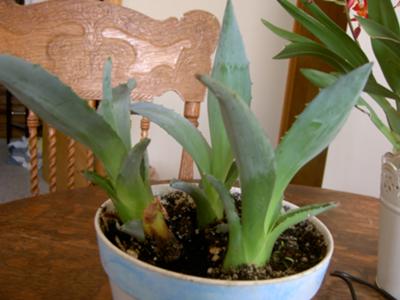
by David Hurd
(Beachwood, NJ, USA)



5 inch upright leaves, spiny edges
Drought Smart Plants reply:
Hi David, the dead giveaway trait for Agave is the lethal spike from the end of each leaf – if this plant shows that characteristic, it’s a safe bet that it is indeed an Agave. These plants tend to have flattish paddle shaped leaves, with sharp teeth on the edges.
If you can see that the tips of the leaves are damaged where the spikes have been cut off, then you will be safe to assume that it’s an Agave.
Due to the fact that there are many Agave produced for houseplants that don’t look anything like their eventual size and shape, there are very few that can be 100% identified as a young plant. Only years of growing in perfect conditions outdoors in their natural habitat will give them the characteristic growth habit of their species.
However, as a houseplant, barring the occasional unpleasant encounter with the deadly spikes, they are easy to grow and care for.
The other alternative is that it is an Aloe, a much friendlier option. Aloe can be identified by the softer thorn like leaf edges which are not as dangerous. The leaves of Aloe plants tend to be curved, not flat.
Happy Succulent Growing!
Jacki
See these pages for pictures of Aloe Succulent Plants and Aloe Plants.

